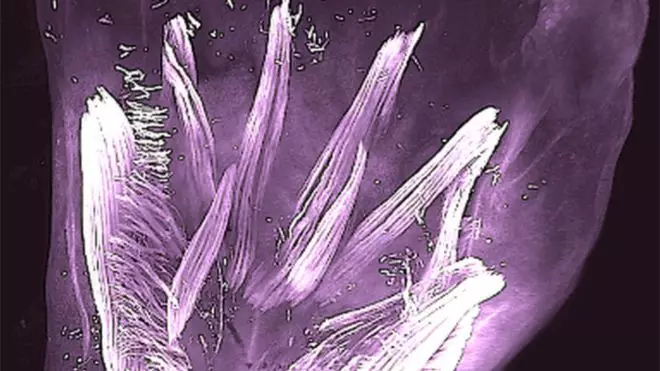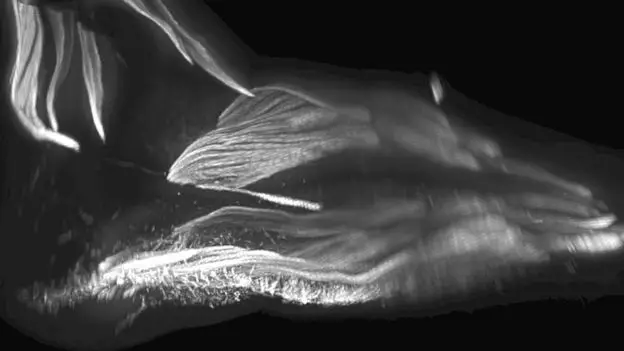
If you're at that age where all of your friends are suddenly starting to have babies, here's a fact that you can use to wow your mates - babies in the womb have extra lizard-like finger muscles that they lose before birth.
Yep, they'll love knowing that about their precious developing bundle of joy.
This information was revealed by medical scans and is one of the oldest examples of human evolution, according to a group of biology boffins writing in the journal Development.
Advert
Basically, these extra hand muscles are an evolutionary hangover from when mammals evolved from reptiles.
What is interesting about them - apart from the fact that it's a really weird and gross thing altogether - is that we aren't sure exactly why the human body still creates them and then gets rid of them in the womb.

It could be - according to the biologists - what gives us our opposable thumb, which is basically what sets us apart from the animals (well, apart from the monkeys).
Advert
Thumbs, you see, have an extra muscle in them that makes them extra-dextrous.
In the past, science has observed that some people have been seen to retain a few of these extra muscles, but never all of the ones that the scanners picked up at between seven and 13 weeks of gestation.
This has real scientific clout, too. Retaining these extra muscles can lead to limb deformities on occasion, therefore the study - which looked at 15 developing babies - could help to understand more about why such defects occur.
The lead author, Howard University's Dr Rui Diogo, said: "We have a lot of muscles going to the thumb, very precise thumb movements, but we lost a lot of muscles that are going to the other digits.
Advert
"In our evolution, we do not need them so much.
"Why are they there? Probably, we cannot just say in evolution, 'Look, I will delete from scratch, from day zero, the muscle going to digits two, three, four, five and I will just keep the one going to the thumb.'
"Probably it is not so easy. Probably you have to form this layer of this muscle and then it disappears on the other digits but persists on the thumbs."
He also stated that these aren't like the other superfluous things in our bodies, such as the appendix and wisdom teeth. That's because they're super-old.
Advert
Dr Diogo continued: "These muscles were lost 250 million years ago,
"No adult mammal, no rat, no dog has those muscles. It's impressive. It was really a long time ago.
"It used to be that we had more understanding of the early development of fishes, frogs, chicken and mice than in our own species but these new techniques allow us to see human development in much greater detail."
Interestingly enough, previous studies have already discovered that we have similar types of muscle in our feet while in the womb. However, we lose them whereas monkeys and apes don't.
Advert

If we didn't lose them, there's a decent chance that we'd be able to use all of our feet and fingers as thumbs.
That would be weird, but cool.
Dr Diogo added: "Some of the things we are losing, it's not that we are getting better humans and more progress. No. We are really losing things that will make super-humans.
"Super-humans would be keeping those muscles because you would be able to move all your digits, including your feet, as thumbs.
"We lost them because we do not need them."
There's a big difference between need and want, Dr Diogo.
Featured Image Credit: Rui Diogo, Natalia Siomava, Yorick GottonTopics: Science, Interesting, Technology